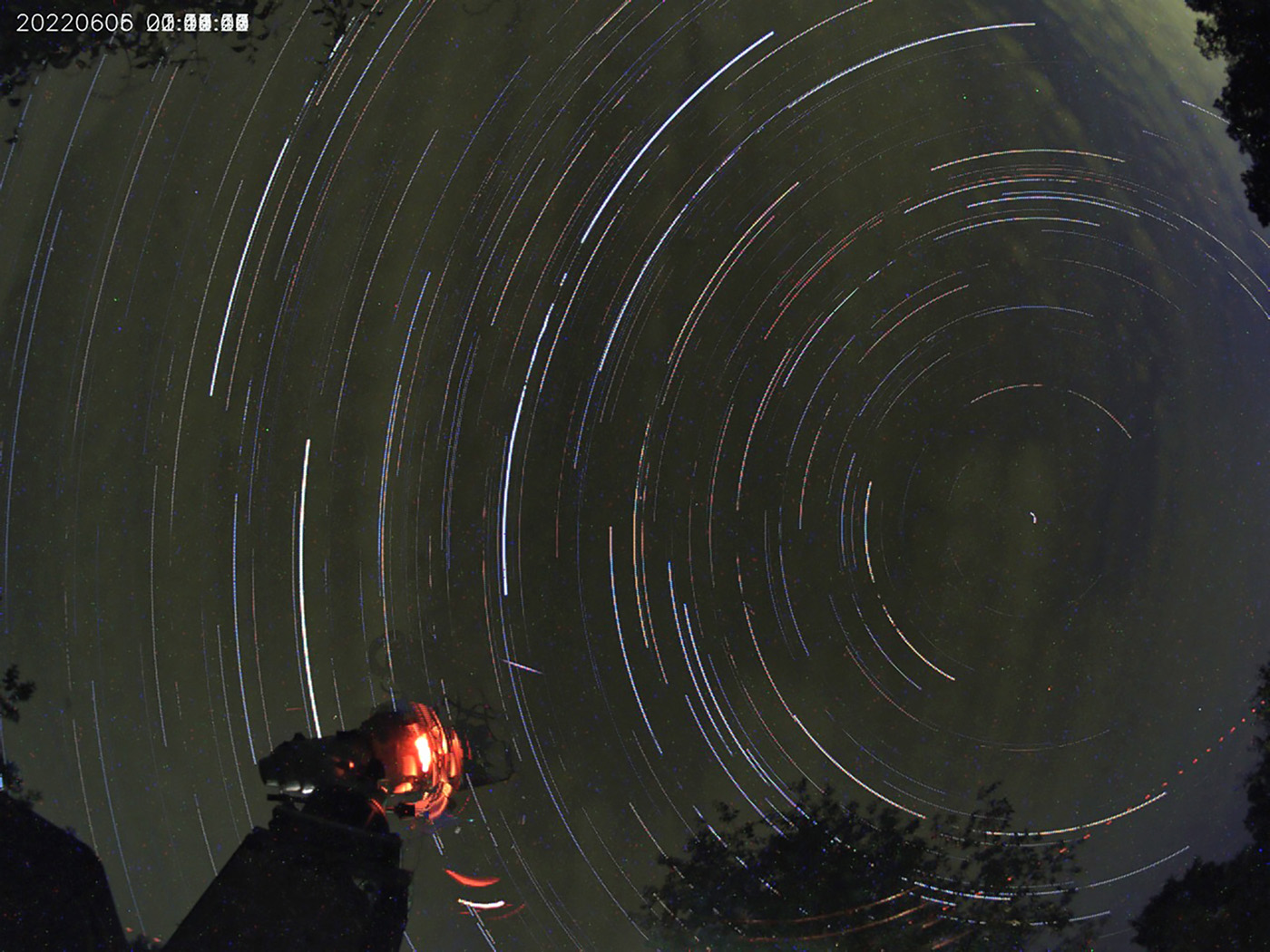What did last night look like?
June 6, 2022
Here's last night's astro-imaging session captured in one image. You can see a couple batches of clouds swept through at different times. The AllSky cam, sitting on a concrete block next to the telescope, takes pictures all night long with a 6mm super-wide-angle lens. In the morning there are a bunch of time-lapse images of the night, and in this "star trails" image, all the separate images from the night are merged into one image, showing the earth's rotation. You can also see some red LED arcs (bottom left) showing where my telescope slewed or tracked a target across the sky. That bright quarter-circle in the center of the rings of star trails is Polaris, the "North Star", alpha Ursae Minoris. Polaris is a few degrees off the NCP--North Celestial Pole, a point in space that marks our planet's rotation in the northern hemisphere (you'll see the SCP in the southern hemisphere, although there isn't a bright star nearby like Polaris). Here's how to think about this: if you extended an imaginary line out from Earth's axis of rotation and you're north of the equator, the line would end, from our perspective, right there at the NCP. You can see that the star Polaris isn't dead-on with the NCP because it too rotates around it.

